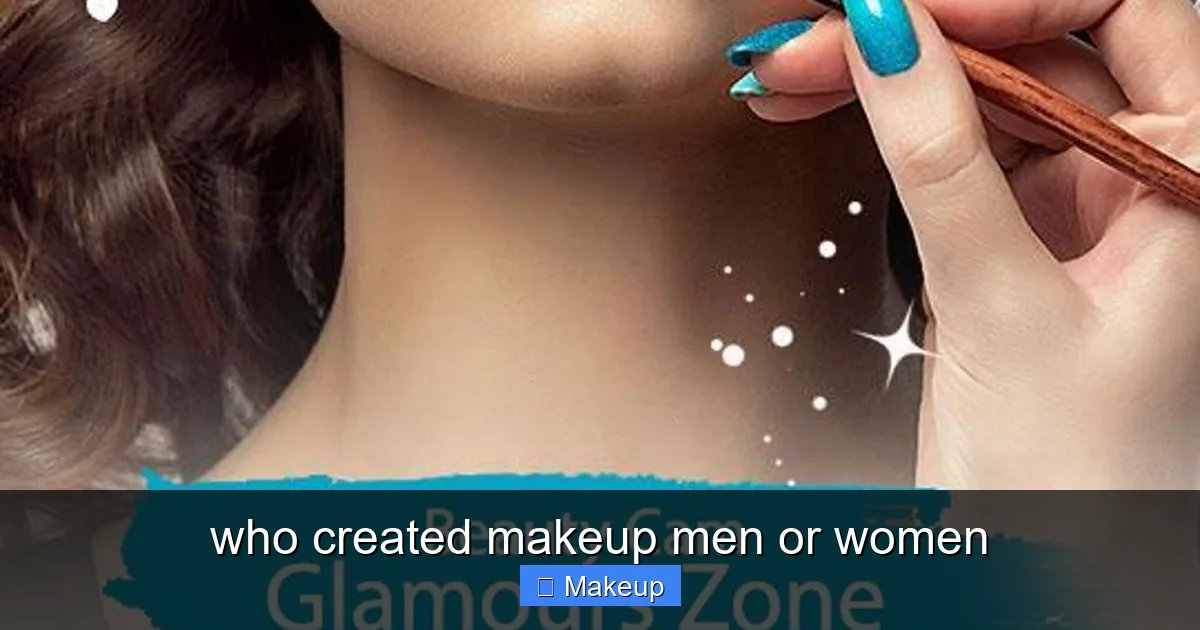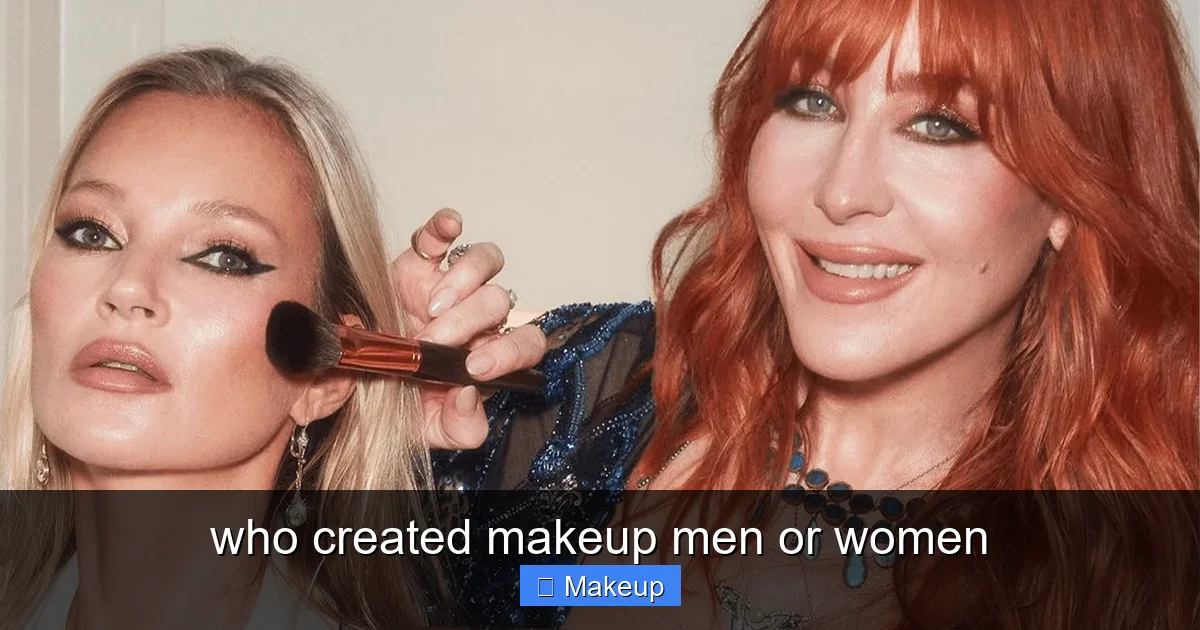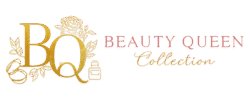
Featured image for this comprehensive guide about who created makeup men or women
Image source: images.sftcdn.net
Who Created Makeup: Unveiling the Ancient Origins (It’s Not Who You Think!)
For centuries, makeup has been a powerful tool of self-expression, transformation, and social communication. But have you ever stopped to ponder its true beginnings? Specifically, have you wondered who created makeup men or women? The answer might surprise you, challenging many modern perceptions and revealing a much richer, more inclusive history than you might expect.
In today’s world, cosmetics are often heavily marketed towards women, leading many to assume that women were the original innovators and primary users. However, digging into the annals of history reveals a captivating truth: makeup’s origins are far more unisex than patriarchal or matriarchal. From ancient civilizations to modern times, both men and women have embraced the art of adornment. Let’s embark on a fascinating journey to uncover the true story of who created makeup and how its role has evolved through the ages.
📋 Table of Contents
- The Dawn of Adornment: Makeup’s Unisex Genesis
- Ancient Egypt: Where Cosmetics Flourished for All
- Beyond the Nile: Mesopotamia, Greece, and Rome’s Cosmetic Contributions
- Eastward Expansion: Makeup Traditions in Asia
- The Great Divide: When Makeup Became “Feminine” in the West
- The Modern Renaissance: Redefining Beauty for Everyone
The Dawn of Adornment: Makeup’s Unisex Genesis
To truly understand who created makeup men or women, we must cast our gaze back thousands of years. The earliest evidence of cosmetic use dates back to prehistoric times, long before gender roles were as rigidly defined as in later societies. Anthropological findings suggest that early humans used pigments for ritualistic purposes, camouflage, and self-expression, without specific gender exclusivity.
Early Civilizations and Shared Beauty Rituals
From ochre for body paint to early forms of eyeliner, the drive to enhance one’s appearance or convey status was a fundamental human trait. These initial forays into cosmetics weren’t about conforming to a specific gender ideal but rather about connecting with the divine, asserting power, or preparing for battle. In many ancient cultures, men and women shared equally in these early beauty rituals, reflecting a time when personal adornment was seen as a universal human endeavor.
| Historical Period/Culture | Primary Users (Gender) | Key Makeup & Purpose | Origin/Cultural Significance |
|---|---|---|---|
| Ancient Mesopotamia (c. 5000 BCE) | Both Men & Women (especially nobility) | Crushed gemstones (e.g., lead ore for eyes, red clay for lips). Purpose: Ritual, status, decoration. | Among the earliest known widespread use of cosmetic pigments. Shared usage from its very inception, not created by one gender. |
| Ancient Egypt (c. 3100 – 30 BCE) | Both Men & Women (all social classes, including pharaohs) | Kohl (galena) for eyeliner, malachite (green) eye shadow, red ochre for lips/cheeks. Purpose: Protection, ritual, beauty, status. | Integral to health, religious practices, and aesthetics. One of the clearest examples of gender-neutral early makeup use. |
| Ancient Greece & Rome (c. 800 BCE – 476 CE) | Primarily Women for beauty. Some Men (e.g., actors, gladiators) for specific roles. | Chalk/lead for pale skin, kohl for eyes, plant dyes for lips/cheeks. Purpose: Symbol of status, beauty standards. | Marked a cultural shift where makeup became more strongly associated with femininity, though men’s grooming was still key. |
| European Elizabethan Era (16th-17th Century) | Both Men & Women (nobility and aristocracy) | Venetian Ceruse (lead-based white paint), cochineal rouge for lips/cheeks, darkened eyebrows. Purpose: Fashion, status, ideal beauty. | Pale skin and defined features were highly fashionable for the elite of both genders, though styles differed. |
| 18th-19th Century (Western World) | Predominantly Women. Men’s overt public makeup use largely declined. | Minimalist approach; subtle rouge, rice powder, eye definition for women. Purpose: Enhance natural beauty (women); seen as vanity (men). | A significant societal shift that solidified makeup as primarily a female domain for nearly two centuries, contrasting sharply with its origins. |
Ancient Egypt: Where Cosmetics Flourished for All
If there’s one civilization synonymous with the opulent and widespread use of cosmetics, it’s ancient Egypt. And here, the answer to who created makeup men or women becomes incredibly clear: it was everyone! Both men and women of all social classes liberally applied makeup, not just for beauty, but for practical and symbolic reasons too.

Learn more about who created makeup men or women – who created makeup men or women
Image source: byrdie.com
Kôhl: Protection, Power, and Beauty
One of the most iconic Egyptian cosmetics was kôhl, a dark pigment used to line the eyes. While often associated with female figures like Cleopatra, pharaohs and noblemen wore kôhl with equal fervor. Its purpose extended beyond aesthetics:
- Sun Protection: The dark lines helped reduce glare from the harsh desert sun.
- Eye Health: Some kôhl formulations contained lead salts that, in small doses, helped prevent eye infections.
- Status Symbol: Elaborate eye makeup signified wealth and social standing.
- Spiritual Connection: Makeup was believed to ward off evil spirits and honor the gods.
Beyond kôhl, Egyptians used red ochre for lips and cheeks, green malachite eyeshadow, and various oils and unguents to soften skin. Both genders participated fully in these elaborate beauty routines, meticulously applying their cosmetics daily.
Beyond the Nile: Mesopotamia, Greece, and Rome’s Cosmetic Contributions
The embrace of cosmetics was not confined to Egypt. In Mesopotamia, ancient Sumerians, Assyrians, and Babylonians, both men and women used ground gemstones and minerals to adorn their faces, particularly around the eyes. Red lipstick was found on the Statue of Queen Puabi of Ur, dating back to 2,500 BC, further solidifying that women created makeup or at least used it extensively from very early times.

Learn more about who created makeup men or women – who created makeup men or women
Image source: media.allure.com
Roman Elegance and Social Standing
The Roman Empire also saw widespread cosmetic use across genders. While women used lead-based foundations to lighten their skin, apply red rouge to their cheeks and lips, and darken their eyebrows, Roman men were also known for their grooming. They used oils, perfumes, and even subtle makeup to enhance their appearance, often for social and political advantage. A pale complexion was highly valued by both sexes, signifying a life of leisure away from manual labor. While societal norms dictated different levels of overt makeup use, the underlying principle of self-adornment was shared.
Eastward Expansion: Makeup Traditions in Asia
The history of makeup in Asia further underscores its gender-neutral beginnings. In ancient China, both men and women painted their faces, often using rice powder for a pale complexion, and applied pigments to their lips and cheeks. During certain dynasties, men even powdered their faces with white lead and darkened their mustaches and beards with kôhl-like substances. The Tang Dynasty, in particular, saw elaborate makeup trends for both genders.
China, Japan, and India: A Rich Tapestry
- China: Early forms of nail polish were used by both men and women, with colors signifying social status.
- Japan: Geishas and Kabuki actors (traditionally men) famously use elaborate makeup, highlighting its artistic and performative role. The white foundation and dramatic eye makeup of Kabuki are prime examples of men using complex cosmetics.
- India: Kohl (kajal) has been used by both men and women for centuries, not just for beauty but also for its cooling and protective properties for the eyes, often applied even to infants regardless of gender.
These traditions demonstrate that the question of who created makeup men or women is moot; it was a universal practice deeply embedded in cultural, religious, and social contexts.
The Great Divide: When Makeup Became “Feminine” in the West
The perception of makeup as primarily a “feminine” domain largely emerged in the Western world, particularly after the fall of the Roman Empire and through various periods of religious and social conservatism. During the Middle Ages, overt makeup was often frowned upon, associated with vanity or even witchcraft.
The Victorian Era’s Subtle Shift
A significant turning point was the Victorian era (19th century). Queen Victoria famously deemed makeup “improper” and “vulgar,” associating it with actresses and prostitutes. This societal judgment led to a dramatic shift, where respectable women were expected to appear naturally beautiful, resorting to subtle, undetectable enhancements if any. During this period, men’s cosmetic use dwindled significantly, limited mostly to grooming products like hair tonics and beard oils. This era cemented the idea that makeup was primarily for women, and often for those of questionable repute, laying the groundwork for many of the gendered perceptions we still grapple with today.
The Modern Renaissance: Redefining Beauty for Everyone
The 20th century saw makeup make a strong comeback, initially driven by Hollywood and the burgeoning fashion industry, largely targeting women. However, the last few decades have witnessed a powerful resurgence of makeup for men, challenging the long-held Victorian notions. From celebrities to social media influencers, men are increasingly embracing cosmetics to conceal blemishes, enhance features, or express their individuality.
Contemporary Gender Fluidity in Cosmetics
Today’s beauty industry is slowly but surely moving towards a more inclusive future. Brands are launching gender-neutral lines, and conversations around beauty are becoming less gender-specific. This modern era truly brings us back to the historical truth: that makeup is for anyone who chooses to use it, regardless of gender. The question of who created makeup men or women now feels less relevant than the shared human desire for self-expression and enhancement.
A Brief Timeline of Makeup’s Gender Evolution
| Era/Civilization | Primary Users | Key Products/Practices | Purpose |
|---|---|---|---|
| Prehistoric (c. 100,000 BCE) | Men & Women | Ochre, charcoal, mud | Ritual, camouflage, tribal identity |
| Ancient Egypt (c. 3100 BCE – 30 BCE) | Men & Women | Kôhl, malachite, red ochre, oils | Protection, status, spirituality, beauty |
| Mesopotamia (c. 3500 BCE – 539 BCE) | Men & Women | Ground gemstones, red lipstick | Status, spiritual connection, beauty |
| Ancient Greece/Rome (c. 800 BCE – 476 CE) | Men & Women | Lead white, red rouge, kôhl, perfumes | Social standing, beauty, hygiene |
| European Middle Ages | Mainly Women (subtle) | Herbal dyes, light powders | Subtle enhancement, religious modesty |
| Victorian Era (19th Century) | Predominantly Women (covert) | Minimal, “natural” enhancements | Subtle beauty, avoiding impropriety |
| 20th & 21st Century | Mainly Women, increasing Men | Full range of modern cosmetics | Self-expression, beauty, professional image |
So, the next time someone asks who created makeup men or women, you can confidently tell them: it was both! From the earliest smudges of ochre to the sophisticated palettes of today, cosmetics have been a shared human endeavor for millennia. Its power to transform, communicate, and express has transcended gender, class, and time.
Understanding this rich history not only offers a fascinating glimpse into our past but also helps us appreciate the fluidity and inclusivity of beauty. Makeup has always been, and continues to be, for everyone. What a wonderful reminder that true beauty knows no gender.
🎥 Related Video: Male vs Female Gaze makeup styles makeup Smokey natural makeup
📺 Aura & Allure
Frequently Asked Questions
Who first created makeup, men or women?
Neither men nor women can be solely credited with “creating” makeup, as its origins are ancient and diverse. Both genders have used various forms of cosmetic adornment since prehistoric times across different cultures and continents, often for ritualistic, protective, and aesthetic purposes.
In ancient history, did men or women use makeup first?
Archaeological evidence suggests that both men and women utilized makeup from very early periods, often concurrently. For instance, in ancient Egypt, both genders famously wore kohl eyeliner and other cosmetics for aesthetic, religious, and protective reasons.
When was makeup first invented or discovered?
The concept of makeup wasn’t “invented” at a single point, but rather evolved over millennia from natural materials. Evidence of cosmetic use dates back at least 6,000 years to ancient civilizations like the Egyptians and Mesopotamians, where pigments were used for various adornments.
Is there a single person credited with inventing makeup?
No, there isn’t one individual who invented makeup. Cosmetics developed independently in different cultures around the world, evolving from natural materials used for body painting, ritual, protection, and beautification over thousands of years.
How did the use of makeup for men versus women evolve historically?
The perception and application of makeup for men and women have varied drastically across eras and cultures. While both genders used cosmetics extensively in ancient times, certain periods in Western societies saw makeup become more exclusively associated with women, though men’s makeup is seeing a resurgence today.
What were the original purposes of makeup for both men and women?
Beyond beautification, early makeup served practical, ritualistic, and social functions for both men and women. It was used for religious ceremonies, to denote social status, as sun protection, and even for medicinal purposes, highlighting its multifaceted role in ancient societies.
